Disclosure: Meeple Mountain received a free copy of this product in exchange for an honest, unbiased review. This review is not intended to be an endorsement.
This Operation is Off-the-Books
Welcome to New Dawn City, 2087. Once touted as an artificial utopia, this technological wonder is a bit past its glory days. An underground crime organization known only as the Syndicate has set its sights on New Dawn and is actively making plays to muscle in and control the city. You are an elite agent; part of a black ops agency dedicated to protecting New Dawn and expelling the Syndicate once and for all. To do this you need to infiltrate the Syndicate and collect evidence of their wrongdoing. Your resources are limited but your agency has a unique approach to this new crime wave – why not use the Syndicate’s own operatives against them?
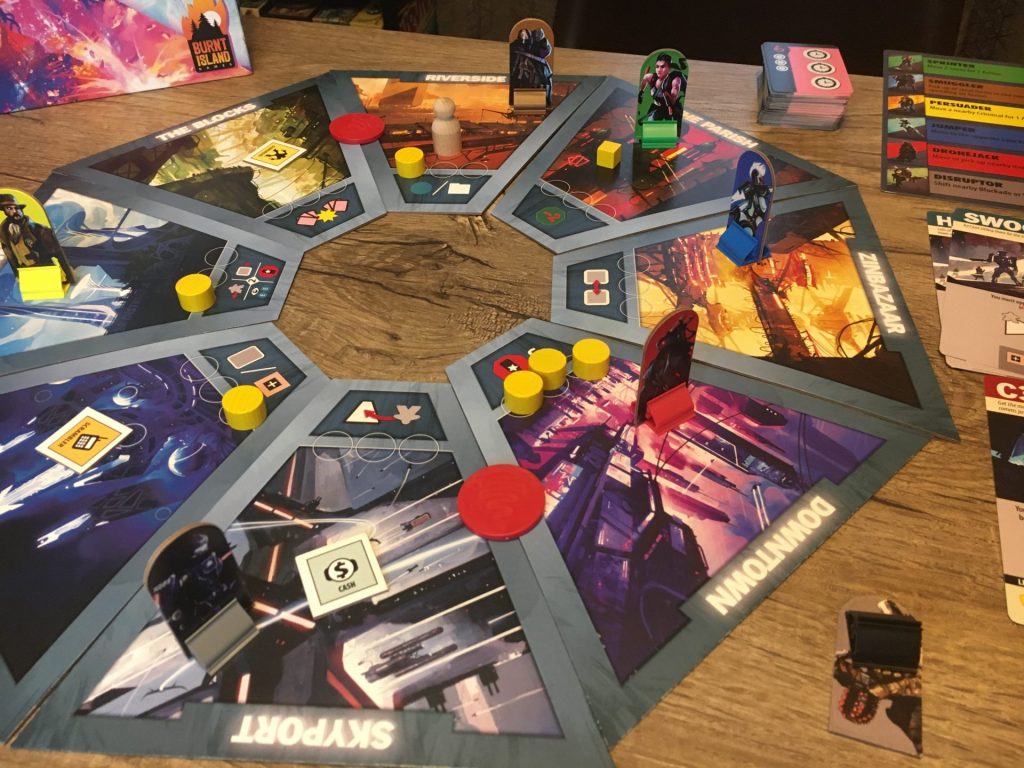
Using unapproved methods and technology you will form a mental link with the various operatives the Syndicate has sent to New Dawn. By doing so you will be able to see through their eyes, gather information on the Syndicate, and ultimately protect the city. This method is not without risks though. As you watch and even exert small influence over these criminals your mind will be strained to its limits. You may even begin to feel a sense of understanding with the criminals you set out to stop. You will need to be careful how far you walk in the darkness or you may not find your way back to the light.
New Dawn, New You
In Too Deep is a unique title pulling elements of resource collection and shared worker placement for the grand goal of gaining intel to expel the Syndicate from the city of New Dawn. Players take turns working to gain deeper levels of “Grip” over the minds of the Syndicate operatives in order to advance through several chapters of crimes culminating in the Final Chapter. Grip is and indication of how deeply you have dived into their minds and can exercise some level of control over a criminal as they proceed with their crimes. These crimes will give agents the evidence necessary to build an official case against the Syndicate and make the arrests needed to protect the city.
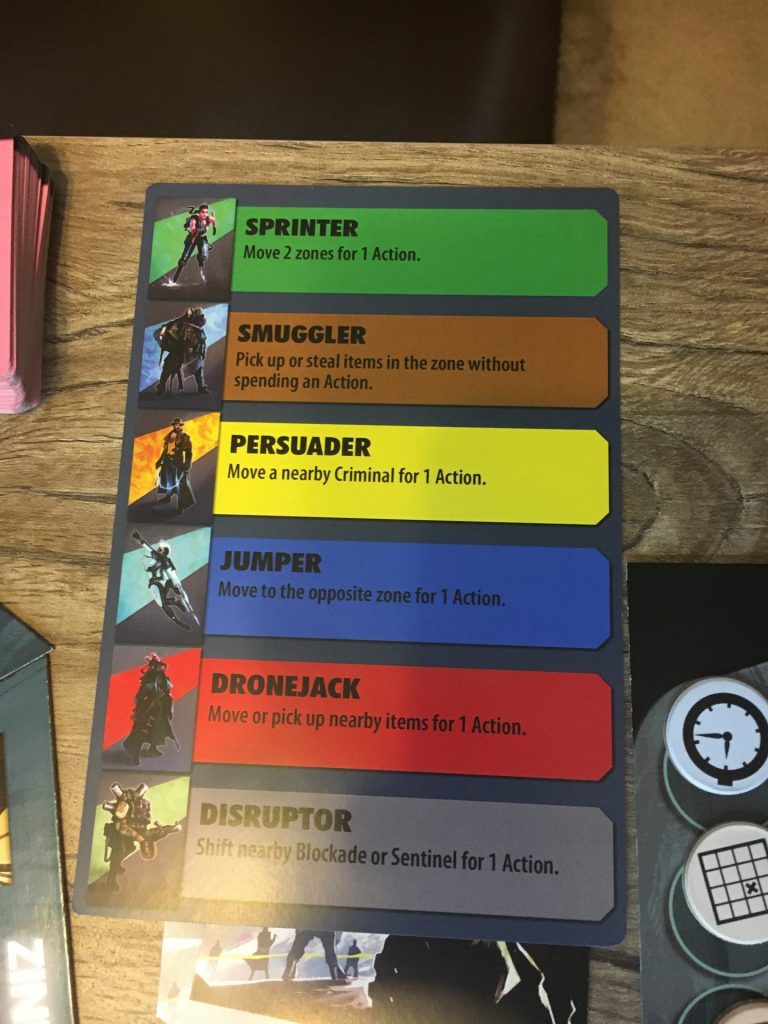
Players all vie for control over a set number of Syndicate operatives in the gamer. Similar to Conspiracy: The Solomon Gambit, players move and reposition these criminals around the city board in order to utilize their variable special powers to complete crime cards and collect the evidence necessary to shut down the Syndicate. There are a lot of actions available to players as they work to combat the Syndicate so let’s look at the options available to them in detail.
Catch me if you Can!
On your turn, you have several ways to optimize your intel-gathering efforts. First, you may choose to “hook” one of the criminals in play. This action allows you to add that criminal’s token to your player board and begin to gain a Grip over them. You can hook a maximum of three criminals at one time, but doing so is dangerous due to the mental strain. If you ever hook into a third criminal you must draw a dilemma card. These cards have a variety of adverse effects that would be best to avoid. You will have to weigh the cost when you decide to spread your influence so widely.
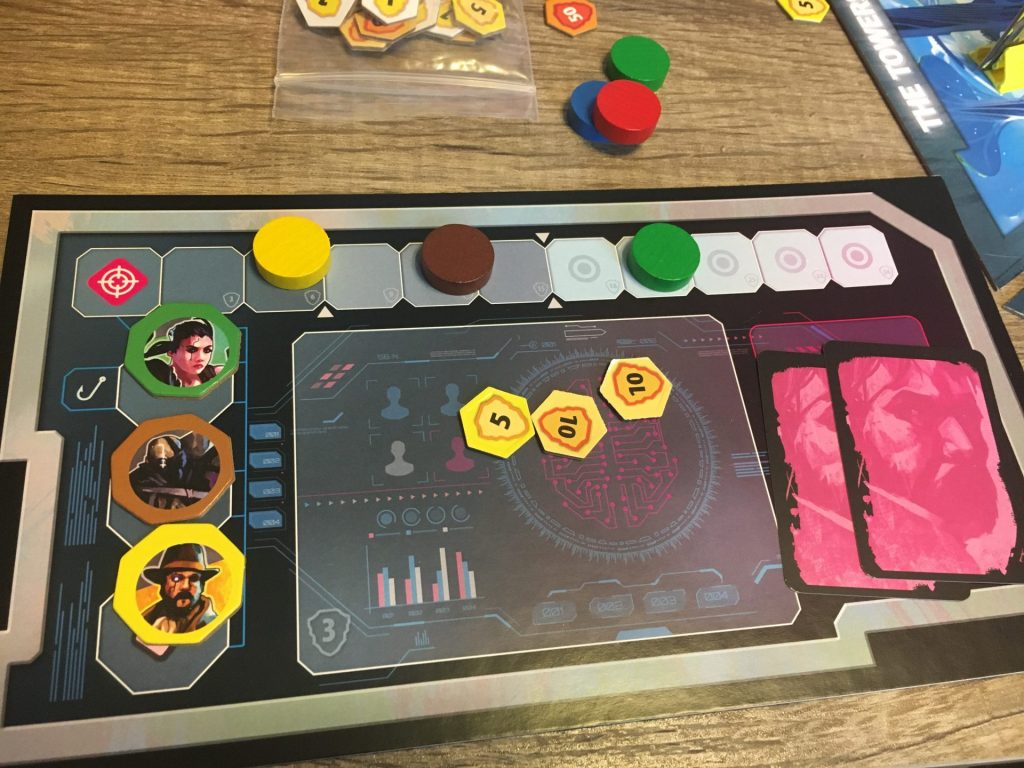
Next, you will gain one Grip with each of the criminals you are hooked up to. Grip has several functions in the game and reaching certain thresholds of Grip grants access to a criminal’s special ability. These abilities are quite powerful and will give you an edge which you can use to get ahead of the competition. You can also spend Grip once it reaches certain thresholds to gain extra actions on your turn. At the end of the game, you will also be rewarded with bonus points based on the criminal in your control with the lowest Grip.
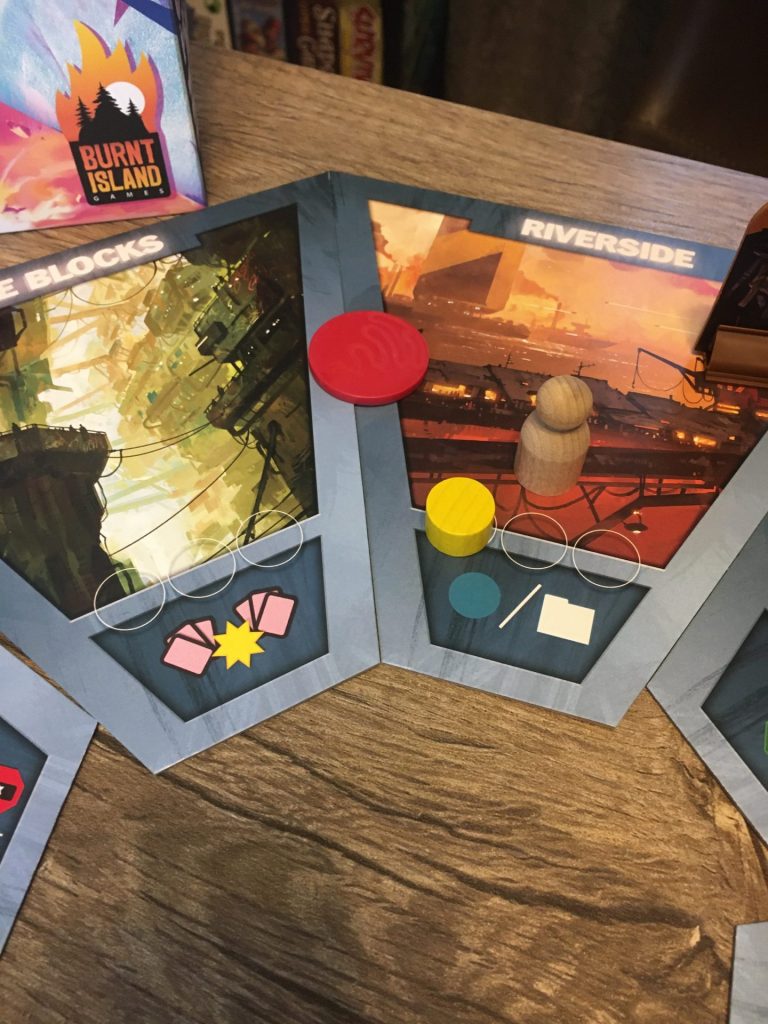
Then you are able to take two actions on the city board. These actions can allow you to move a hooked criminal, pick up items on the map, use criminal or zone skills, or gain more Grip over a hooked criminal. The actions make up the meat of the game and are where a lot of your strategy will come to bear. Criminal and zone skills consist primarily of mobility or repositioning options that help you set up the board in a favorable way to complete your Crime cards.
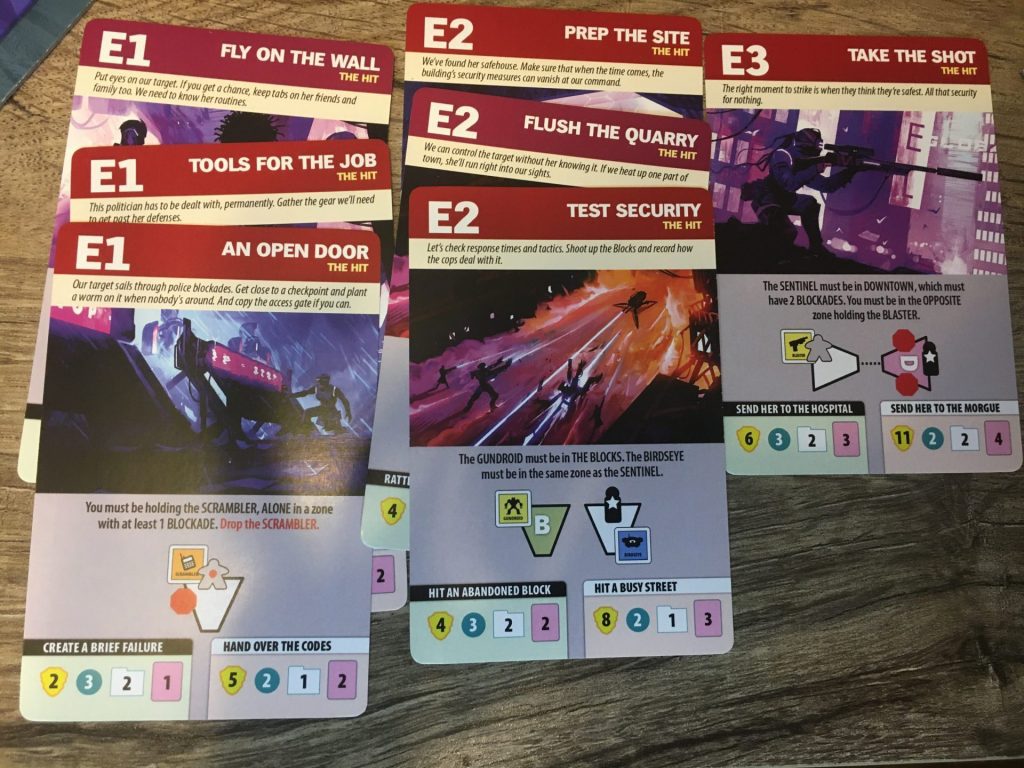
Crime cards require you to meet various requirements such as being in a city zone alone with a certain item or sharing a space with another criminal. You will have to work to relocate various obstacles, such as law enforcement or collect items in order to advance your quest to find evidence. A huge assist will be utilizing your hooked criminals’ skills (assuming you have enough Grip) or activating the zone’s effect if there is no heat (police force) present.
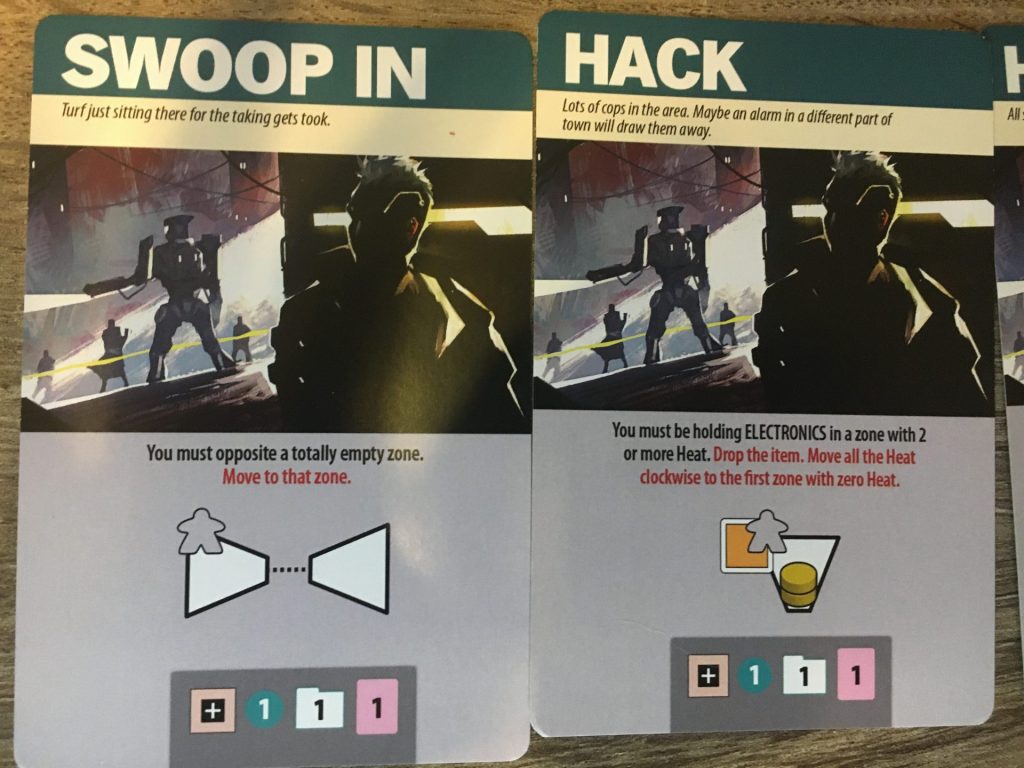
After you have used all of your actions you can attempt to complete a Crime card. Each player has a hand of story or side Crimes they can work to complete. The cards have a similar layout with requirements that must be met, options for an approach to complete the Crime and a payout of intel, and the ability to collect and file evidence. Story Crimes must have prerequisite Crimes completed, in order, while side Crimes only require a certain “setup” such as being alone in a zone or to be holding a certain item. The cards are self-explanatory and guide you easily as you pursue the evidence. Crimes are the main way to gain and file evidence. This will help you score intel through the Chapters of the game and prepare you for the final Chapter. An important note is that while you are along for the ride, these criminals are committing these Crimes of their own accord. You may be able to sway them slightly, but you are really just observing and collecting evidence to prosecute them. Either way, just observing these Crimes may start to have its mental toll. Crimes will start to give you dilemma cards that will start to build up your corruption from Chapter to Chapter. While dilemma cards add corruption, they also provide various end game scoring benefits. They can provide additional intel or possess wanted posters and sentinel sigils that all can be collected and scored for large amounts of intel at the end of the game. You will have to weigh the cost of carrying corruption with you.
A player concludes their turn by discarding and drawing more Crime cards back to their hand.
Time to Get Sleuthing!

Let’s talk more in detail about evidence. Evidence is the core aspect of In Too Deep and is essential to ending the Chapters of the game and being victorious. Each game of In Too Deep is broken into three Chapters where players will work to provide evidence to meet the given requirements, gain intel and advance to the next Chapter. Evidence comes in various types and all are needed at various moments depending on the Chapter requirements. Chapters lay out specific types of evidence required and whenever you are able to file evidence due to completing Crime cards, you may file a matching evidence tile to the current Chapter you are on. You may also elect to start stockpiling evidence away for the final act. The evidence here will be used at the end of the game but is placed facedown so you had best commit it to memory.
Evidence also acts as the “timer” for a given Chapter. Evidence is stored in areas called the plank and the pool. The plank contains 4 evidence faceup and the pool contains 5 evidence per player, which are facedown. When you collect evidence, you must take one from the plank and the rest from the pool. After you collect evidence, you must refill the plank by taking from the pool. If there is not enough evidence to refill the plank, the Chapter ends and you can check to see if you succeed or fail at gaining enough evidence this Chapter. If all of the necessary requirements were filled with evidence in this Chapter, you succeed and gain an intel bonus. If requirements remain, those who did not contribute to the Chapter at all will receive a negative repercussion.
Tools of the Trade
In Too Deep has a LOT of niche components to it that give it the depth and strategy necessary to keep you coming back for more. I will briefly outline some of the things that give In Too Deep its depth (pun intended) here.
Blockades: These prevent criminal movement and must be maneuvered around or moved.

Heat: Police presence in zones will limit how and when you can use zone powers. You will need to strategize how to distract them or work around them.

Sentinel: This robotic menace of justice will pursue your criminals around the zones. Be sure to have a plan on how to avoid it.

Boosts: These items are earned throughout the game and act as bonus actions you can take to change the layout of the board as well as set yourself up for some quick crime completion.
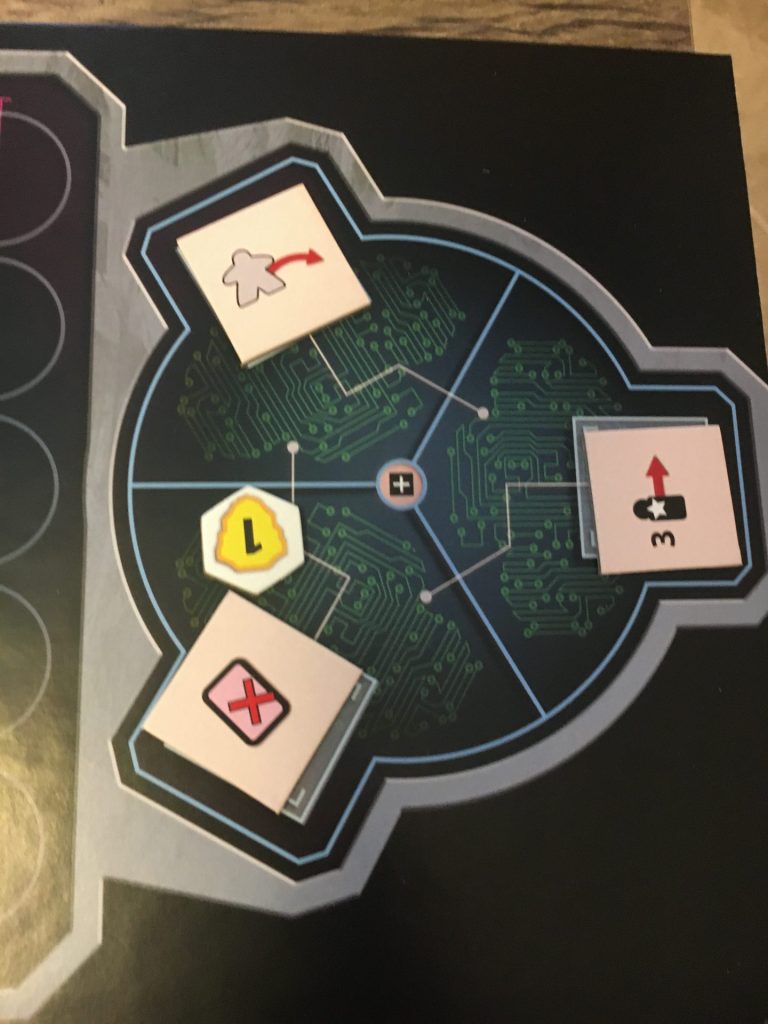
Items: There are many types scattered all over the zones. They are often required in a zone or in the hand of a criminal to complete various Crimes.

All of these elements layer together to create a beautiful mesh interplay that requires a lot of strategy to navigate. You will have to maneuver around your opponents and bend the board to your will in order to come out ahead.
The Final Chapter
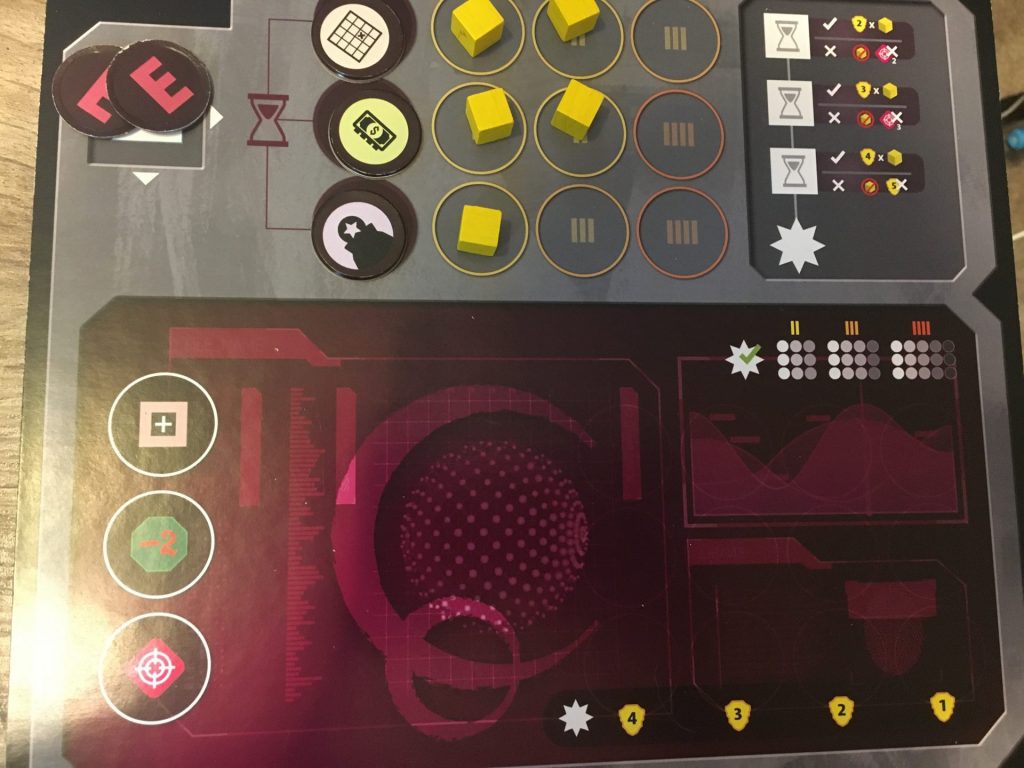
In Too Deep will continue in this way until the completion of the third and final Chapter. At this point players will calculate their final intel score to see who built the best case against the Syndicate. The scoring has a lot of interplay that I will leave you to discover for yourself, but the short version is that you will be reviewing your corruption cards, Grip and evidence collection to determine your final score. The exciting aspect of this step is the interplay of the dilemma cards and the final plot. Dilemma cards, you may remember, grant you certain end game bonuses that are all beneficial. Unfortunately, to gain these bonuses you will have to accept the level of corruption on the card as well. At the end of the game, the player who was the most corrupt went in too deep and may also suffer a penalty on the final case. The player with the least corruption will gain a bonus of 5 intel for each player who is more corrupt. This tightrope of trying to maximize the benefits of the dilemma cards while not getting in too deep was really thematic and enjoyable.
At last, you will check to see if the final plot was foiled by comparing your evidence collection to the player requirements. There is a set number of types of evidence you will need to collect based on player count to determine if you beat the final plot or not. Either way, this signals the end of the game and the player with the most intel is determined to be the victor and will receive the glory for building the best case against the Syndicate.
Good Cop, Bad Cop – Final Thoughts
In Too Deep puts players in a unique role as they weigh the thematic and logistic choices of diving into the darkness. Dilemma cards you receive from hooking up to a lot of criminals and completing Crimes are not necessarily bad. In fact they often offer amazing end game points. Balancing your corruption and choosing your “playstyle” is a huge selling point to me about In Too Deep. Criminal powers, as well as all of the items in play, really require you to strategize ahead and plan for the unexpected as you attempt to set up the zones for your Crimes.
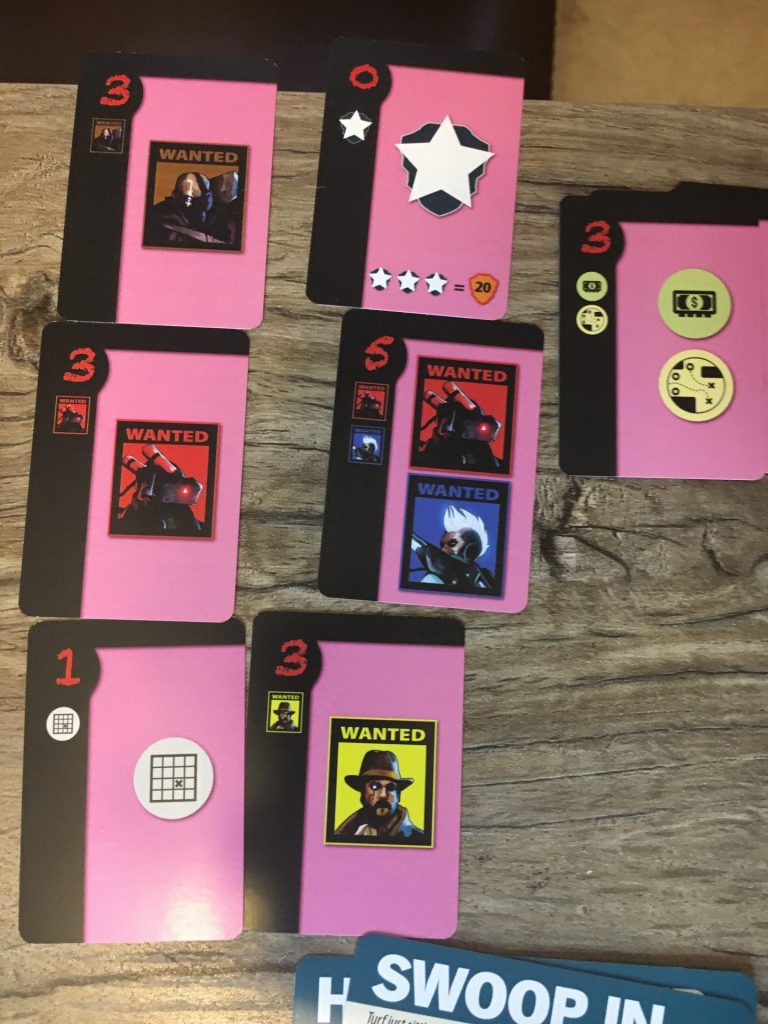
The prototype art present already sets a great dystopian vibe and I am excited about the final product. Minis and final art are going to give In Too Deep the table presence it deserves.
In Too Deep draws on some more nuanced styles of play. It took a moment to teach as players worked to remember that we had shared units we were moving around the board. It is easy to think that “you” are the green player when really anyone can be the green player or yellow player throughout the game. This constant shuffle of who was controlling whom took some getting used to but really contributes to the overall theme and is quite enjoyable once you get your mind around it.
Scoring has several layers to it which gives players lots to consider and plan for as they approach the end game. This is a great benefit as players need to strategize to build on their strengths or try to shore up their weaknesses.
The individual Chapters seem digestible and offer a nice “tutorial” for the advancing difficulty of future Crimes.
All in all, the unique mechanics, layered interactions and double edged sword of scoring options left me eager to replay In Too Deep to try a different strategy or attempt to utilize different criminals. While a bit of a brain burn at the onset of teaching, I am very excited for the Kickstarter’s success and am looking forward to all of the replayability that will be packed into In Too Deep. If you love the dystopian theme or are looking for something with a unique take on worker placement, I think you are really going to enjoy what In Too Deep brings to the table.
In Too Deep
Genre: Worker Placement, Set Collection
Pros: Deep Board Interactions, Varied Victory Strategies, Rich Theme that Feeds into Gameplay
Cons: Sloped Learning Curve, Shared Units Can be Confusing to Some
Rating: 7/10 I really liked the approach In Too Deep took on morality and the greater good. Solid mechanics and good strategic depth make this a keeper in my book.




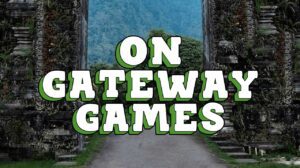


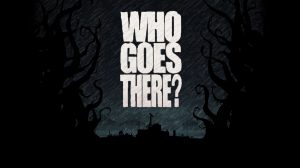




Sounds like a lot of fun!